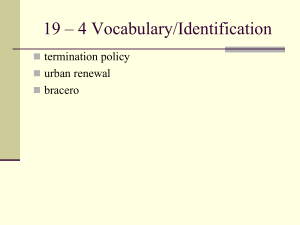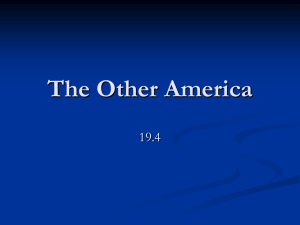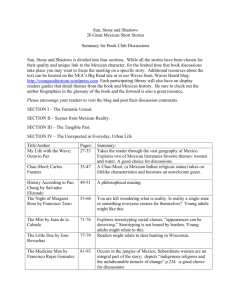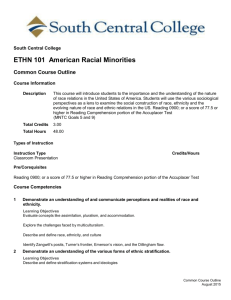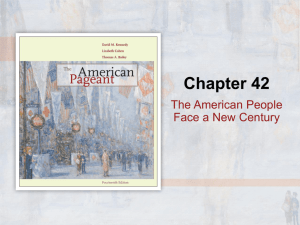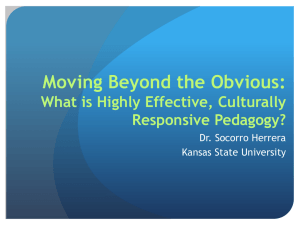19 4 The Other America
advertisement
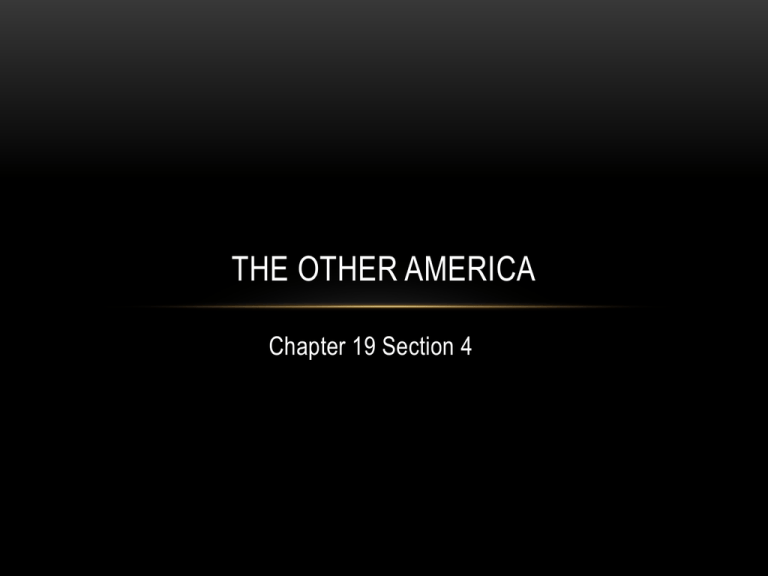
THE OTHER AMERICA Chapter 19 Section 4 WHITE FLIGHT In the 1950’s millions of middle class Americans left the city and moved into the surrounding suburbs which isolated them from other races and economic classes. While they were moving to the outskirts of the cities, the rural poor were moving into them. Between 1945-1960 over 5 million African Americans had moved from the rural South to bigger urban areas. This crisis in the urban cities brought about what came to be known as the “White Flight.” People feared the repercussions that this movement would have. This move of the middle class made it harder on the poor whites and non-whites for many reasons. As the middle class moved to suburbia they took with them many businesses, even more so tax payers. The urban cities could not afford to maintain schools, public transportation, or police and fire departments. THE INNER CITY LIFE Because of the economic conditions in the urban areas, poverty began to grow among the people living in the cities. American’s in the suburbs however, were not aware of the growing economic decay that was taking place in the inner cities. Some suburban American’s even refused to believe that poverty was possible in the most powerful nation on the planet. At one point, the poverty line was set Detroit 1950. “Skid Row” along Michigan Ave. at 2,973 dollars for a family of four to survive. To compare that to more modern standards, in the year 2000 that number was $17,601! URBAN RENEWAL City life was dirty, over crowded, and depressing for most African, Latino, and Native Americans. But one solution to the housing problem was urban renewal. The National Housing Act of 1949 was part of this urban renewal, it called for the tearing down of rundown neighborhoods and the construction of low income housing. The issue of city housing and development became such a big issue for America that later there was a cabinet position created in the white house named Housing and Urban Development (HUD). Even though there were efforts made to correct the city slums and make city life better for the people who lived there not everyone was helped. New factories, shopping centers, highways, and parks were created but there was not enough housing built for the displaced residence of the cities. Some were just moved from one slum to another because of the renewal. Some would later call urban renewal, “urban removal” MEXICANS SEEK EMPLOYMENT In 1942 a large number of Mexican workers called “braceros” were allowed into the United States to help in harvesting crops. They were not meant to be permanent residence and were expected to leave the country in 1947. Many of the Mexican workers stayed in the U.S. as illegals and hundreds of thousands more crossed he border to escape Mexico’s terrible economic conditions. Their presence in the U.S. was not always welcome and the illegal immigrants became subject to a lot of prejudice. One of the most notorious instances was the burial of Felix Longoria. Longoria was a Mexican American WWII hero that was killed in the Philippines. The only undertaker in his home town refused to provide services to the family for his burial. This act of prejudice fueled Mexican American’s effort to stop discrimination and get organized. They later formed the G.I. Forum and the Unity League of California to help register Mexican voters. This “Longoria Incident” made Mexican Americans become political activists in America. NATIVE AMERICAN STRUGGLES For a long time U.S. policy toward Native American issues was simple, Americanize them and assimilate them into white customs. However that later changed and the policy began to move towards Native American autonomy. As the Great Depression set in the U.S. government wanted to stop subsidizing the Native Americans. Native Americans wanted two main things for themselves, the same rights and white men and to be able to keep their own customs. However, during WWII over 65 thousand Native Americans left the reservation and took part in the war effort. As a result they faced a lot of discrimination and when the war ended they stopped receiving their wages and family allotments. Some even lost their tribal lands to private investors for the natural resources there. THE TERMINATION POLICY In 1953 the federal government decided that it would no longer be responsible for Native American tribes. This new approach to the issue became known as the “ termination policy.” This policy terminated the federal government’s economic support of Native Americans and distributed the reservation lands to individual Native Americans. In response the Bureau of Indian Affairs made efforts to relocate Native Americans to the urban cities. This policy was a down right failure in the end. Even though a lot of Native Americans were successfully relocated to the cites, many of them did not find jobs because of their lack of job skills and racial prejudices. The Native American city dwellers were also left without access to medical care along with not being able to find work. Over a decade later the termination policy was finally abandoned in 1963.
